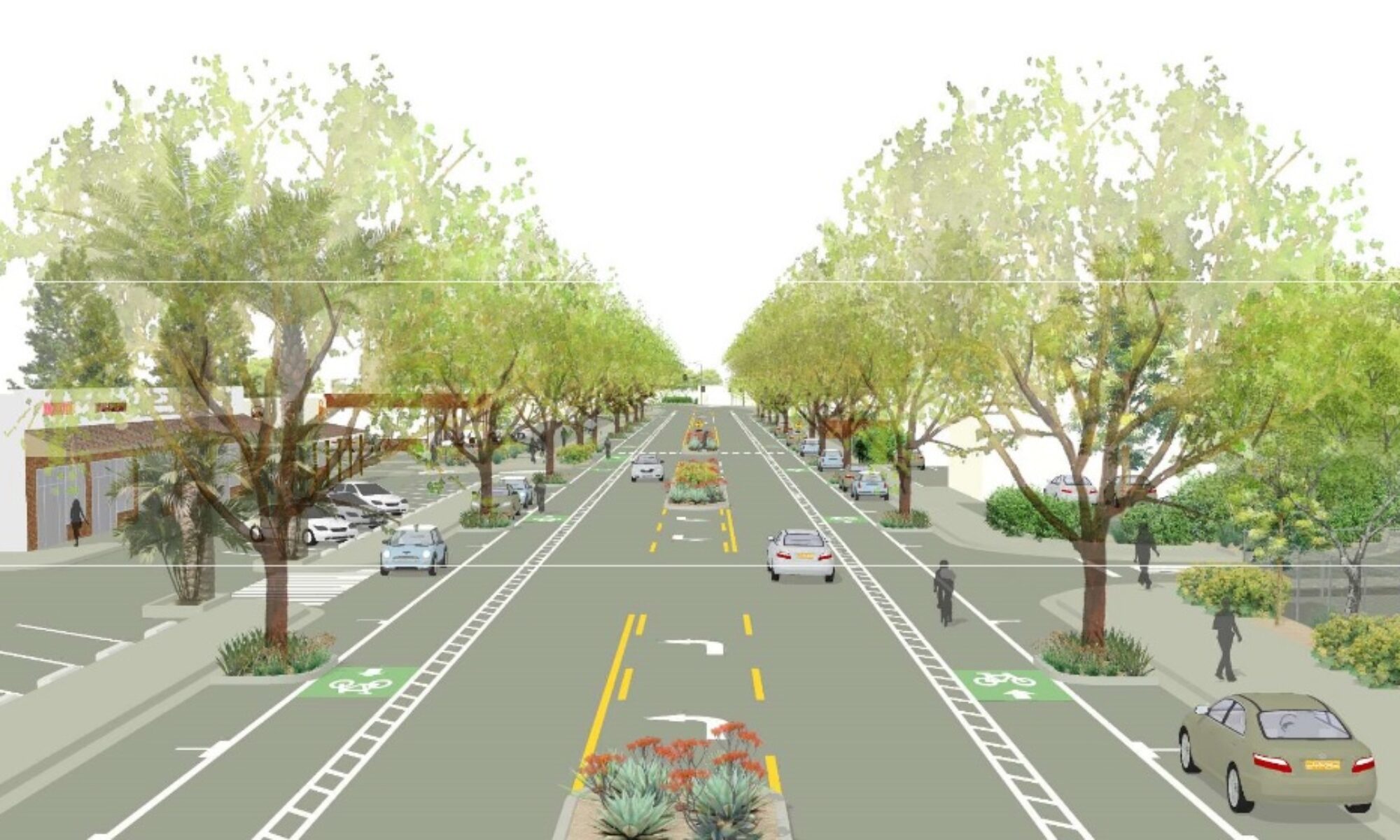What is a ‘road diet?” We look to Wikipedia for an overview.
(Source: https://en.wikipedia.org/wiki/Road_diet)
A typical road diet technique is to reduce the number of lanes on a roadway cross-section. One of the most common applications of a road diet is to improve safety or provide space for other modes of travel.[1] For example, a two-way, four lane road might be reduced to one travel lane in each direction.[2] The freed-up space is then used to provide or enhance some of the following features:
-
- Adding or widening of footpaths/sidewalks
- Adding or widening of boulevards (landscaping strips)
- Adding cycle lanes on one or both sides of the road
- Adding reserved tramtracks, usually in the middle of the road
- Widening remaining traffic lanes (if previously unsafely narrow to allow four lanes)
- Adding a center turn lane / flush traffic median for turning traffic
- Adding a reversible center lane
- Conversion of the rightmost or leftmost travel lane to a breakdown lane (The Lodge Freeway in metro Detroit is an example of this after I-96, the Jeffries Freeway, was built.)
If properly designed, traffic does not divert to other streets after a road diet, because the road previously provided excessive capacity. In other scenarios, reduction of traffic (either local traffic or overall traffic) is intended in the scheme. Road diets are usually successful on roads carrying fewer than 19,000 vehicles per day. Road diets can succeed at volumes up to about 23,000 vehicles per day. However, more extensive reconstruction is needed. Examples include replacing signals with roundabouts, traffic calming on parallel streets to discourage traffic from diverting away from the main road, and other means to keep traffic moving smoothly and uniformly.
We can also find key information about the ‘road diet’ concept to increase safety within a stretch of highway in the Road Diets | A Livability Fact Sheet, provided by the AARP.
Highlights
-
- The wider the road, the faster some people will feel comfortable to drive. Sometimes this leads to more and worse accidents, including deaths. So, a solution is to narrow the pathway; remove a lane or two in both directions.
- When pedestrians only have one lane of traffic to cross at a time — not two, three, or four — they are less prone to be hit.
- Streetscapes are more attractive with wider sidewalks lined by trees and the occasional bench, with bike racks, enough overhead night lighting. This leads to more people visiting and mingling, the local businesses doing better, and the community being rated higher.
Myths — too often mistakenly claimed as effects of road diets … will they happen in the Oak View Half Mile?
-
- they divert traffic,
- increase congestion,
- increase crashes,
- aren’t good for public transit,
- are bad for business,
- they are being reversed in some places,
- they slow down emergency responders,
- they will cause traffic jams during evacuations
